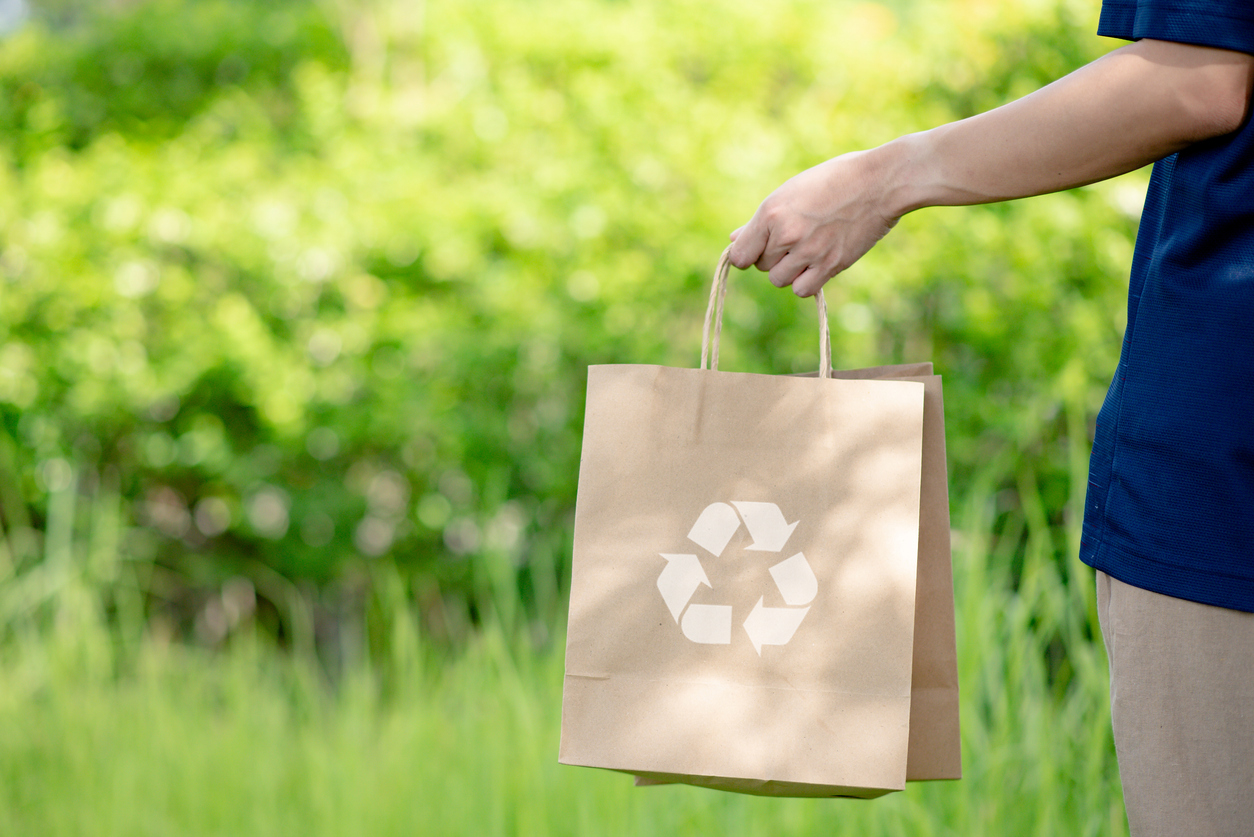Explore ESG and sustainability by industry, with a focus on standards, reporting, current trends, and best practices in retail & CPG.
Introduction: Why ESG & Sustainability Differ by Sector
While ESG and sustainability are often discussed in abstract and generic terms, their practical emphasis varies greatly across industries. In manufacturing the focus is on emissions reduction, supply chain responsibility, and safer, more efficient production processes. The oil and gas sector, by contrast, is under pressure to demonstrate transparency in governance and reporting, while also making credible progress on long-term decarbonization through methane reduction, carbon capture, and investment in alternative energy.
Retailers face different demands. They must ensure fair labor practices in their supply chains and safeguard consumer data, while also addressing sustainability in highly visible ways such as packaging reduction and waste management. Consumer packaged goods (CPG) companies encounter similar pressures, with added scrutiny over the sourcing of raw materials like palm oil and cocoa, alongside product-level initiatives such as recyclable packaging and reduced water use.
What emerges from these examples is that ESG and sustainability, though often spoken of in the same breath, mean different things depending on the sector. Each industry faces its own combination of compliance pressures, reputational risks, and opportunities for innovation.
Nowhere is this more evident than in the retail and consumer packaged goods sectors, which we now take a closer look at.
ESG and Sustainability in Retail & CPG
ESG is especially material in retail & CPG for three main reasons: brand, reputation and investor scrutiny, and a tougher regulatory environment, in particular around packaging and the circular economy.
Consumer preference is measurably shifting toward products with credible evidence of sustainability; McKinsey/NIQ find higher sales growth for CPG items carrying ESG-related claims, with consumers willing to pay a premium in many categories.
ESG attributes are now tightly correlated with corporate reputation and purchase intent (RepTrak trend data), and retail and institutional investors’ interest in sustainable strategies remains high despite periodic market outflows.
Packaging design, recyclability, reuse systems and extended product responsibility (EPR) fees now directly affect margin structure and route-to-market economics, particularly in the EU and an increasing number of US states.
What is Financially Material in Retail & CPG?
Retail and CPG cover a wide range of activities, so companies need to consider what is financially material for their subsector. SASB/IFRS Industry Standards provide a baseline for decision-useful KPIs and risk registers then layer in the appropriate regional standards (e.g., EU ESRS) where applicable.
For Apparel, Accessories & Footwear (brand retailers & CPG) organizations need to track raw-materials sourcing (cotton/leather/synthetics), supply-chain labor practices, chemical management, packaging life cycle, take-back/repair, and product-end-of-life.
Household & Personal Products (CPG) materiality factors include product safety and ingredients, water management, palm-oil supply chains, packaging life cycle, consumer use-phase impacts.
Food, Beverage & Tobacco manufacturers and retailers must track agricultural sourcing (deforestation, animal welfare), food waste, packaging, cold-chain energy, product safety/recalls.
For E-commerce & Multiline Retail companies the sustainability/ESG issues are likely to be financially material include data privacy/security, last-mile emissions, returns/waste, own-brand supplier oversight, responsible marketing/green claims.
Standards and Regional Variations
European Union & United Kingdom
Large and listed companies operating in the EU must report on FY2024/25 onwards according to the European Sustainability Reporting Standards (ESRS); multinationals with significant EU presence will also be in scope. Organizations should therefore build data models that can map SASB metrics to ESRS topics.
The Packaging & Packaging Waste Regulation (PPWR), which has been in force since 11 Feb 2025, tightens recyclability/design-for-recycling, reuse systems, and reduction targets, directly affecting bill of materials and EPR costs. It follows national legislation such as Germany’s Green Dot System.
Other EU regulations of concern to these sectors include the EUDR deforestation directive. Large firms are expected to comply from the end of December 2025 and SMEs from June 2026. This will have a major impact for buyers of cocoa, coffee, palm oil, leather, timber and rubber, which are core categories in retail and CPG.
The supply-chain due diligence (governance) regulation, CSDDD, has been in force since July 2024 and will be phased in by Member States from 2027 according to company size. It requires firms to identify, prevent and remedy human rights and environmental harms across value chains.
The EU is also intent on combating “greenwashing.” Although the future of the proposed Green Claims Directive is uncertain, enforcement against greenwashing continues via existing consumer law. The United Kingdom has its own Green Claims Code, which prohibits the use of vague terms such as “eco” or “sustainable” unless substantiated.
Firms operating in the UK must also abide by the Modern Slavery Act: Annual statements are required for large companies. Updated government guidance stresses transparency and effectiveness and reforms are under discussion to strengthen accountability.
The UK has furthermore introduced a packaging tax on plastic packaging with less than 30% recycled materials.
United States
Regulations differ by state in the USA. Most significantly, the California SB-253 (GHG disclosure) & SB-261 (climate risk) legislation requires large companies to make TCFD-style reports on Scope 1, 2 (2026) and Scope 3 (2027) emissions. CARB rulemaking is underway in 2025.
The SEC climate rule, based on the ISSB framework, was adopted March 2024 but has been put on hold but is currently under legal review.
The Uyghur Forced Labor Prevention Act (UFLPA) was signed into law in December 2021, establishing a rebuttable presumption that goods produced wholly or in part in the Xinjiang Uyghur Autonomous Region of China are made with forced labor and prohibited from importation into the USA.
There are various state-level packaging EPR programs being advanced. Companies operating in states such as California, Oregon and Minnesota (with more to follow) can expect producer fees, design requirements, and data reporting obligations.
Asia
Australia, Japan, Singapore and other Asia-Pacific countries have their own rules. For example, listed companies in Japan already disclose TCFD-aligned sustainability information; new Sustainability Standards Board of Japan regulations will move toward ISSB alignment, with Scope 1/2 disclosure timelines. Singapore has mandatory climate reporting for listed issuers, while Australia has its own anti-modern slavery regulations.
What Does This Mean for Procurement, Supply Management and Reporting?
To ensure compliance and to protect reputation, procurement leaders should map regulations to spend categories, with a focus on high-risk categories such as agricultural commodities (EUDR), leather/rubber (EUDR), palm oil (SASB Home & Personal Care), cotton/textiles (UFLPA), plastics/packaging (EU PPWR, UK PPT, US EPR). They should prioritize supplier segmentation and traceability (geo-coordinates for EUDR), and demand evidence of recycled content.
Procurement professionals should also update terms and conditions to require geolocation data for EUDR commodities; modern-slavery risk assessments and remediation plans (UK/AU/CA/EU); chain-of-custody or recycled-content attestations; and cooperation on audits and product foot printing.
On packaging and circularity, companies should treat PPWR/EPR fees as design constraints. This means shifting to mono-materials, light-weighting, reuse, and verified recycled content. Forecast EPR cash costs by market and embed in category strategies.
To cope efficiently with the various regional and national standards, companies should use SASB/IFRS industry standards to define material KPIs and adapt these to disclose through ESRS (EU) or ISSB/TCFD-style (non-EU) baselines. This keeps one data backbone for multiple regimes.
However, there are some areas that cannot be left to procurement alone. Corporate leadership should set up a cross-functional “claims committee” (Legal/Marketing/Procurement/ESG) to approve any environmental claim for on-pack or online listings; they should prepare document substantiation dossiers according to Competition and Markets Authority (CMA) standards in the UK and prepare for EU requirements even if they are currently delayed.
Technology and Data Enablers for Retail and CPG
ESG and sustainability are top of the agenda in retail and CPG and will prove challenging for procurement and supply chain leaders. The following technological developments will help them rise to the challenge:
Supplier traceability platforms
Tools that capture farm or factory-level data (including geolocation and digital certificates) make it possible to prove that raw materials such as cotton, coffee, or palm oil come from approved sources. This is increasingly vital as buyers must show that products are free from deforestation or forced labor. JAGGAER has expanded its capabilities to include supplier due diligence, compliance checks, and traceability. This can be supplemented with data feeds from specialists for deeper traceability in certain categories (e.g., palm oil and cotton).
Packaging and product foot-printing software
Life-cycle assessment tools and packaging design platforms model carbon, water, and waste impacts of materials at the design stage. They allow teams to compare options, select compliant materials, and calculate recycled content percentages, which regulators and consumers now expect.
Product information management (PIM) and labelling systems
Centralized product data hubs ensure that sustainability claims, such as “recyclable” or “carbon neutral,” are consistent, evidence-based, and automatically updated across labels, websites, and online marketplaces. This reduces greenwashing risks.
AI-driven demand and returns forecasting
Machine learning models help predict demand more accurately, cut overproduction, and manage reverse logistics. Lower waste and better returns management align with consumer expectations and sustainability goals.
Blockchain and digital ledger solutions
A project by JAGGAER and EY has developed a blockchain solution that is used selectively for high-risk supply chains to create immutable records of provenance, certifying where and how a product was made. For regulators and investors, this provides auditability. For consumers, QR-code access to this data will strengthen trust in brand claims.
Third-party verification and benchmarking services
Independent platforms provide supplier ratings on social and environmental performance and allow retailers to benchmark their own progress. This gives investors and regulators confidence that disclosures are credible. For example, JAGGAER partner EcoVadis provides supplier sustainability ratings across environment, labor & human rights, ethics, and sustainable procurement. Retailers and consumer goods companies often use it to benchmark large supplier bases and identify high-risk tiers.
Analytics dashboards for executives
Integrated dashboards pull in data from sourcing, logistics, marketing, and finance to present a clear view of compliance status, packaging costs, supplier risks, and consumer sentiment. For leadership teams, this ensures ESG issues are managed as part of core business performance, not in a silo.
Conclusion: Sector Expertise Is Essential
In the years ahead, retail and consumer goods companies will face growing pressure from customers, regulators, and investors to prove that their products are responsibly made and fairly marketed. The biggest trends shaping the sector are a sharper focus on sustainable packaging, closer scrutiny of how and where raw materials are sourced, and stronger rules around truthful product claims. At the same time, labor practices and supply chain transparency are moving center stage.
The priorities are clear: design packaging that can be reused or recycled, ensure traceability back to farms and factories, and be rigorous in how environmental promises are made and backed up. Companies that act early and integrate these practices into everyday operations will not only avoid fines and reputational setbacks but also gain an edge in customer loyalty and long-term brand value.
For procurement and supply chain leaders, the call to action is equally clear: embed ESG at the core of supplier relationships, sourcing decisions, and reporting practices to secure resilience, investor confidence, and long-term advantage. The JAGGAER One source-to-pay platform, with end-to-end supplier intelligence supplemented by third-party data feeds from ESG and sustainability specialists such as EcoVadis, is your best bet for achieving these goals. As well as meeting the needs of procurement, supplier intelligence data from JAGGAER can be easily integrated into high-level executive dashboards.
Gain ESG visibility across the entire Source-to-Pay process with JAGGAER ESG Intelligence.
Turn Supplier, Risk, and ESG Insight into a Competitive Advantage.




